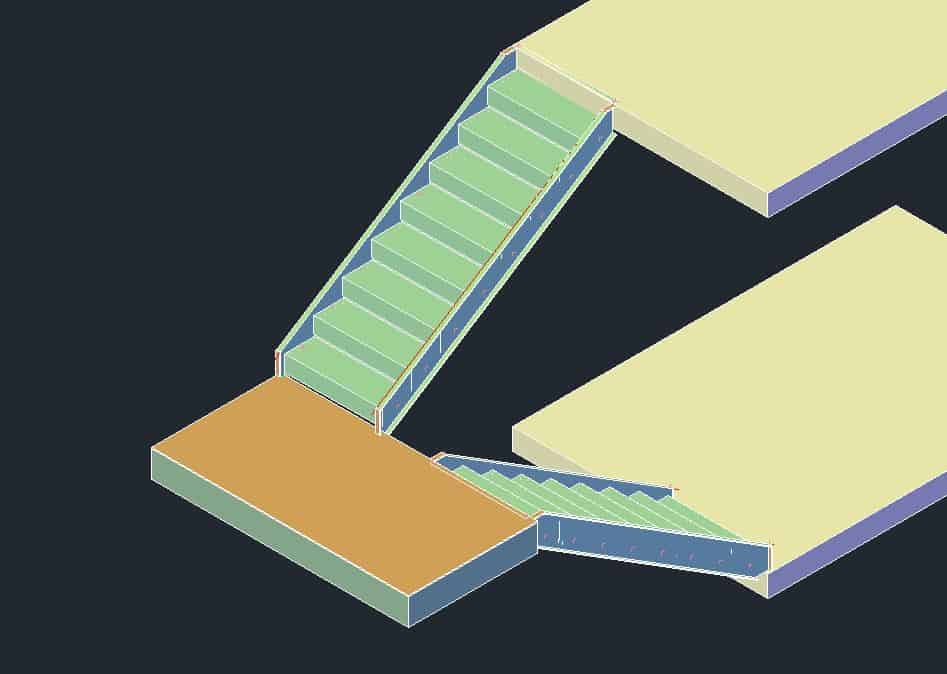In this article, I will show you how I make stairs for projects all around the city of Chicago and the suburbs. These stairs are the easiest to manufacture, and they are very economic. This design has always passed all inspections for me.
The stairs, made of the standard MC10x8.4 profile and diamond plate steps, are easy to handle, install and manufacture. The clients are very happy because I save them a ton of money.
You can download the template for the stairs here, so you can make them in just a few clicks, instead of taking hours adjusting all the parameters.
Here is how I go about making this stair in Advance Steel:
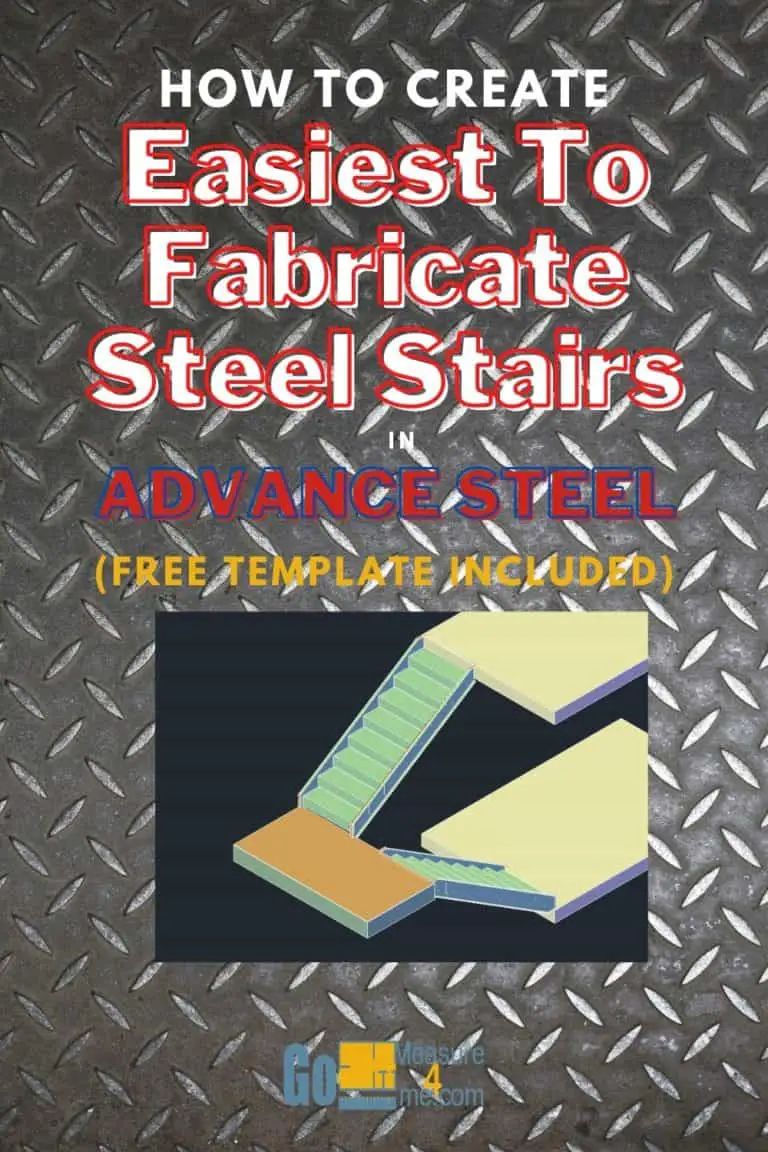
You Can Watch My Tutorial YouTube - Here:
0. Open the Template File
Once your Template File is downloaded, unzipped it and open it. You can delete the stair and floors which are created – we will create a new set of stairs.
1. Make Floors - For Reference
- Go to Objects -> Other Objects -> Rectangular Slab

- You will be asked to specify the start point of the slab’s diagonal line. Enter value: 0, 0, 0. Press ENTER to confirm.
- The next thing you need to do is specify the dimensions of your slab. Enter 8’, 12’. Press ENTER to confirm.
- The dialog box will open. You can modify your slab here, as well as change the dimensions, position or thickness. Close the dialog box.
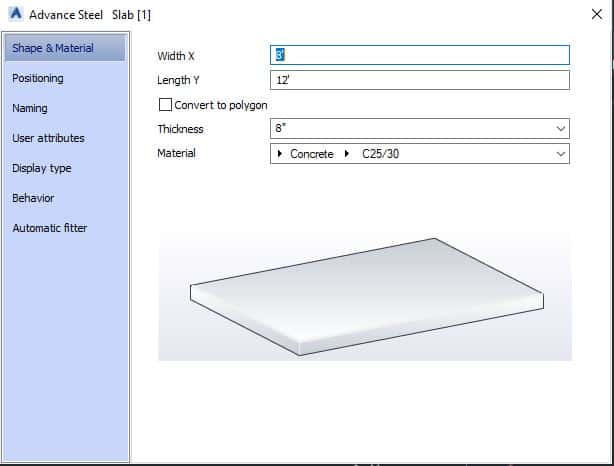
- To create the next floor, draw the vertical line with the desired floor to floor height. In this case: 10’–4”.
- Select the concrete slab we just drew. Go to Advance Steel Tool Palette, and in the Modify tab, choose Copy
- Select the lowest point of the vertical line and copy the slab to the highest point of the line.
- You can change the color of the line to differentiate it from other lines
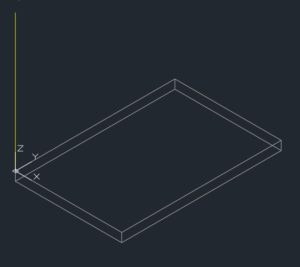

2. Calculate the Raise and Required Raisers Quantity
- Type CAL to open the calculator to calculate the required raise of the step.
- Divide 10’–4” into 7” (the highest allowable raise as per IBC code). The result is 17.714, which translates to 18 raisers.
- Draw the line from the middle of the line between two floors to the lower floor.
- Type DIV and press ENTER. You will be asked to select the object you want to divide. Select the line you just drew.
- You will be asked to enter the desired number of segments. Enter 9 (which is half of 18 – the total of the required raiser count).
- Your line will be divided into 9 equal pieces.
- Select the line and all the dividers.
- Type G and press ENTER to group the elements.
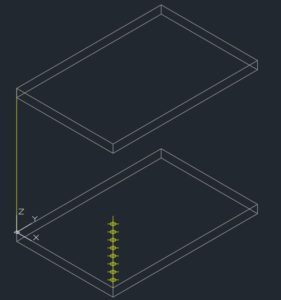

3. Calculate Total Run
- Calculate total run by multiplying the number of steps by 11” (minimum step run as per IBC code). In our case: 8 x 11” = 88”
- From the edge of the lower slab, draw an 88” long horizontal line.
- Draw the vertical line to mark the first raiser.
- Move the 9 raisers long line to the other edge of the run horizontal line.
- Move all lines towards the center of the slab by 1.5″ (thickness of the MC channel we are going to use).
- You can change the color of the all-drawn temporary lines for easy identification.
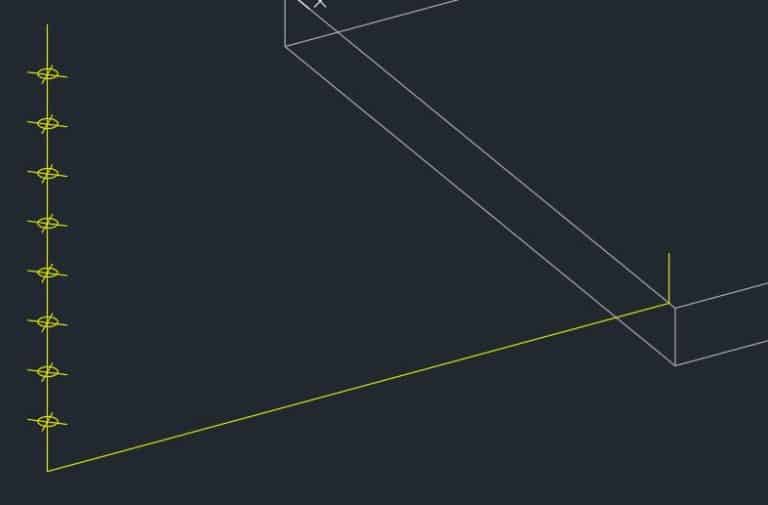
4. Make Stair Flight
- Now it is time to draw the first flight of the stair. Go to Home -> Extended Modeling -> Straight Stair.

- Choose option: 0 – Start and End points
- Specify the first point at the top of the shorter line and the second point at the top of the longer line.
- Specify on which side the stair should be made (0-Left, 1-Middle or 2-Right).
- The stair will be created, and dialog box will open.
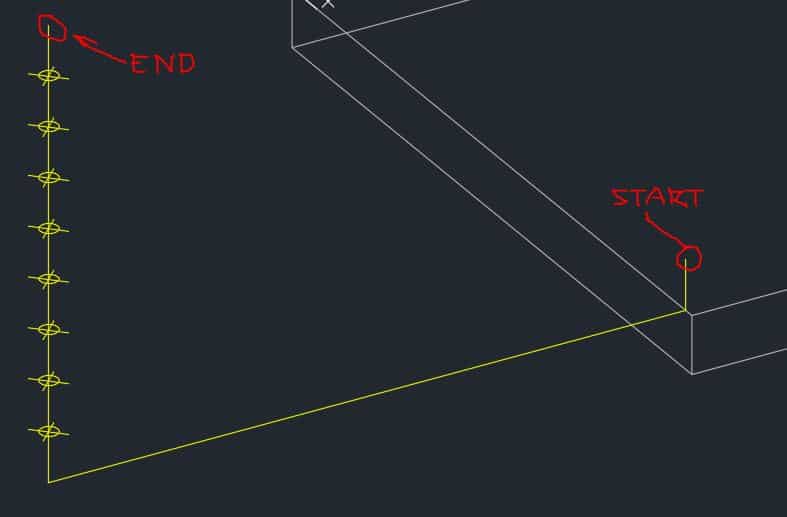
5. Use the Template and Modify the Stair
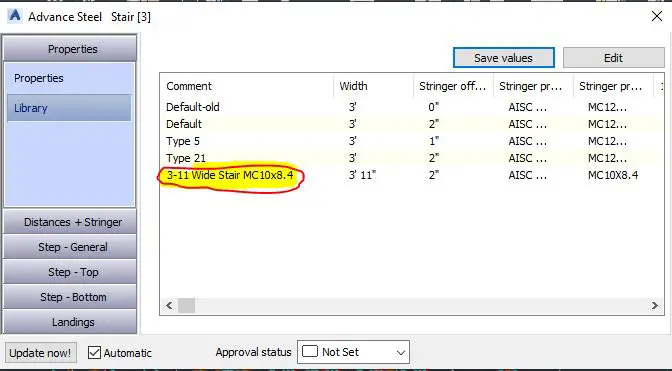
- Go to Properties -> Library and choose 3–11 Wide Stair MC10x8.4.
- Go to Landings -> Top Landing Profile and uncheck Create Front and Rear.
- Close the dialog box.

Your new stairs schould look like this:

6. Create Landing
- Hide the top elements of the stair
- Draw a rectangular REC with the landing’s desired dimensions
- Move the rectangular REC into a position on the top of the first flight
- Go to Home tab -> Objects -> Beam from Line


- Select the recently drawn rectangle and press ENTER
- You will be asked if you want to delete the temporary lines; answer correspondingly Y/N
- The dialog box will open. Choose the steel section you want to use. In our case, it is MC10x8.4
- Close the dialog box
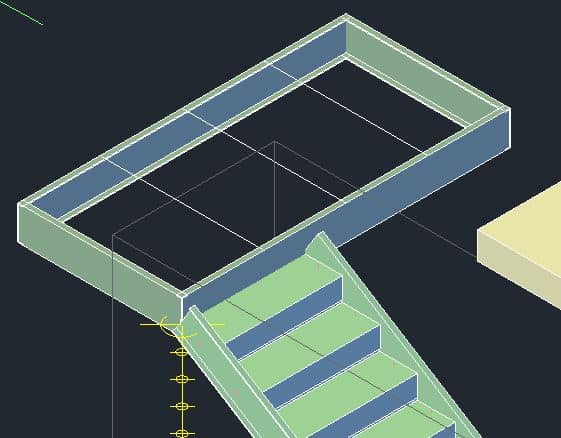
7. Create Landing Internal Supports
- Draw the line from the center of the beam to the center of the beam on the opposite side.
- Trim the line if necessary, using the TR (trim) command
- Make a copy of this line on each side of the center line 24” apart (or whatever distance is required.
- Go to Home tab -> Objects -> Beam from Line and select the lines to be converted into angles.

- You have the option of deleting afterward temporary lines, just answer Y/N
- The dialog box will open. Choose the appropriate angle section. In our case: L4x4x1/4
- Adjust the positioning of the angle – Offset and Rotation (Angle) sections
- Close the dialog box
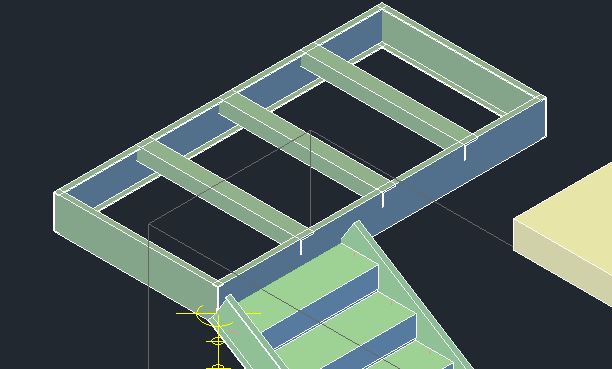
8. Apply Corner Miter To Landing
- Open Advance Steel Tool Palette and go to the Features tab at the bottom
- Select two perimeter channels and press ENTER
- Repeat this procedure for all platform corners
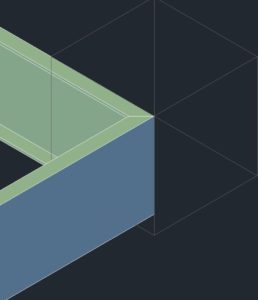
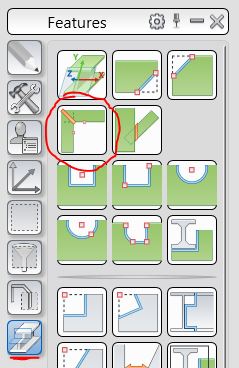
9. Apply Cope to L-Angles
- Open Advance Steel Tool Palette and go to the Features tab at the bottom.
- Choose Cope, Parametric
- Select the perimeter channel and press ENTER, and then select the angle and press ENTER
- Do this for all ends of the angles
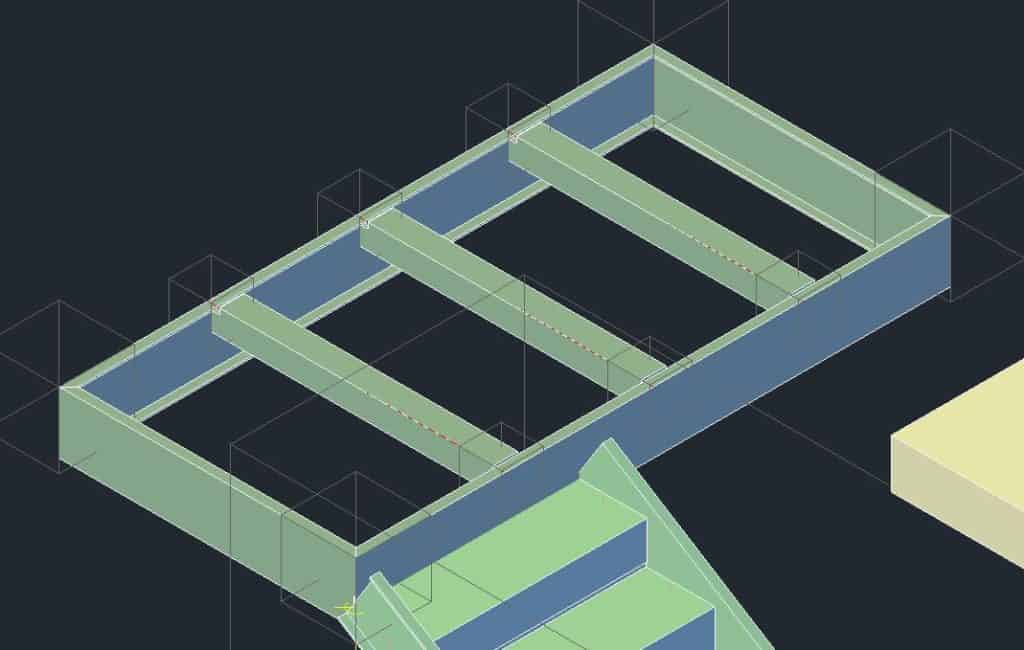
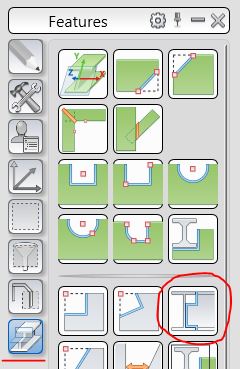
10. Make the Cover Plate for the Platform
- Place the UCS at the top corner of the new steel intermediate platform by going to Advance Steel Tool Palette -> UCS -> Move UCS
- Go to Home Tab -> Objects -> Rectangular Plate, 2 points

- Select two diagonal points on the platform
- A dialog box will open. Adjust the thickness if required
- Close the dialog box
11. Adjust the Platform Position
- We need to lower the position of the platform by the top plate thickness. In my case it is 3/8″.
- Select the entire platform and top plate and use the M (Move) command to move the platform down
12. Adjust the Top Part of the Stringers
- Move the UCS to the top corner of the platform to just below the plate.
- Rotate the UCS, so the X,Y plane is oriented vertically in the space.
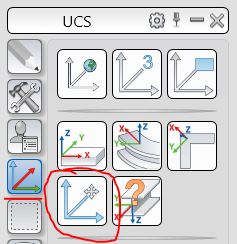
- Go to Advance Steel Tool Palette -> Features -> Shorten at UCS.
- Choose both MC channels and press ENTER.
- Both channels will be shortened.
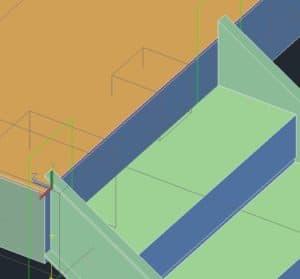
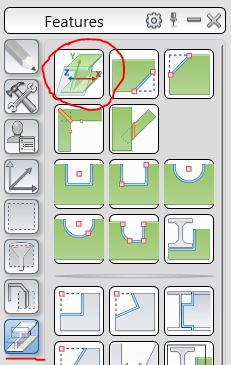
- Rotate the UCS again, so the X,Y plane is oriented horizontally.
- Go to Advance Steel Tool Palette -> Features -> Shorten at UCS.
- Choose both MC channels and press ENTER.
- Both channels will be shortened again

13. Applying the Plate Covers
- Now that the top channels have been shortened in a very elegant manner, it is time to apply the plate covers.
- Go to Home tab -> Objects -> Rectangular Plate, 2 Points.

- Select two diagonal points where the plate needs to be applied.
- A dialog box will open – adjust the thickness and positioning if necessary.
- Close the dialog box.
- Make a weld between the channel and the plate by using the Weld icon in Home tab -> Objects -> Weld Point. Choose the Continuous option if desired.
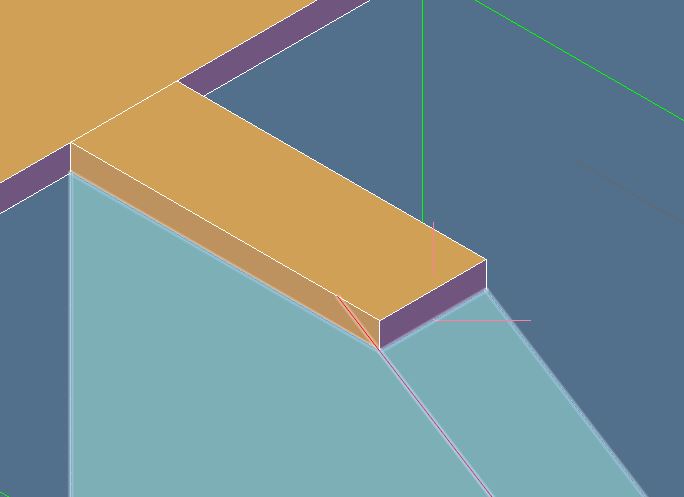
- Copy the plate to the top of the channel on the opposite side of the stair.
- Make the weld connection on the other side.
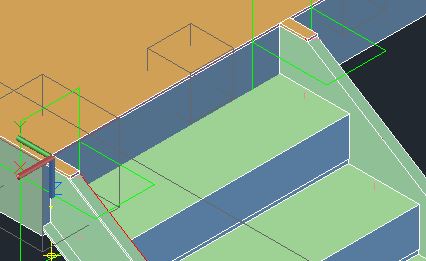
14. Adjust the Bottom Part of the Stringers
- Place the UCS at the bottom of the stair. The X,Y plane should be positioned horizontally.
- Go to Advance Steel Tool Palette -> Features -> Shorten at UCS.
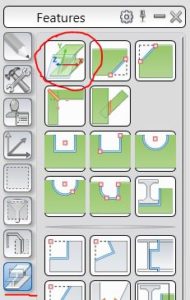
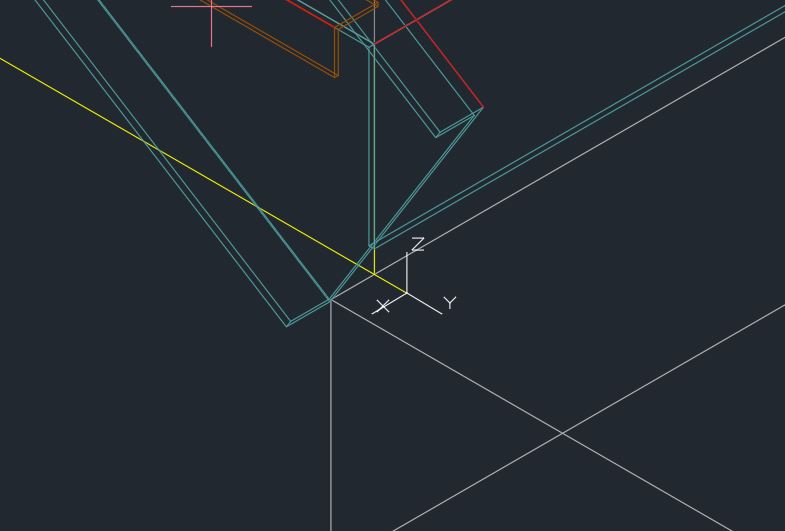
- Choose both MC channels and press ENTER.
- Both channels will be shortened.
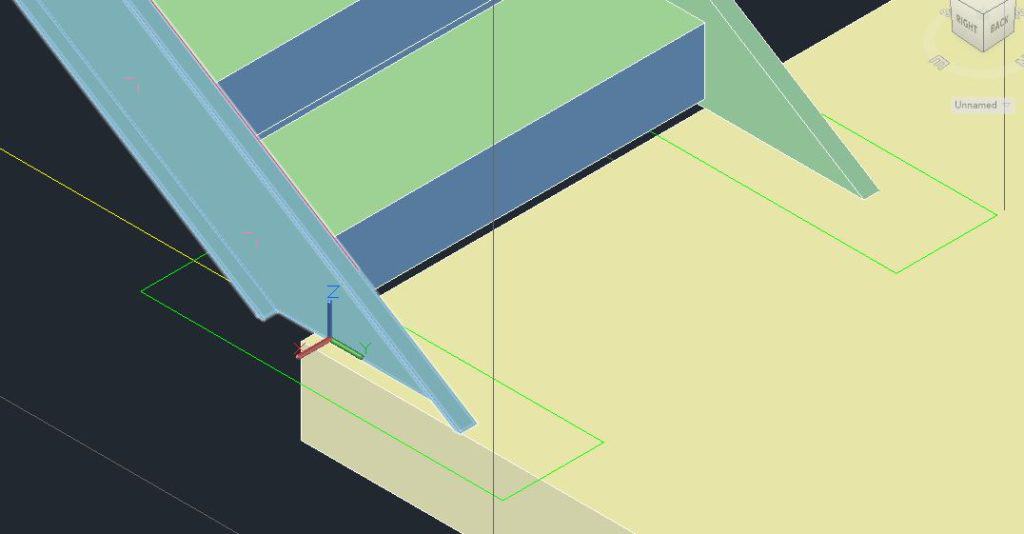
- Rotate the UCS so the X,Y plane is parallel with the stringer’s face.
- Go to Advance Steel Tool Palette -> Features -> Shorten at UCS.
- Choose both MC channels and press ENTER.
- Both channels will be shortened.
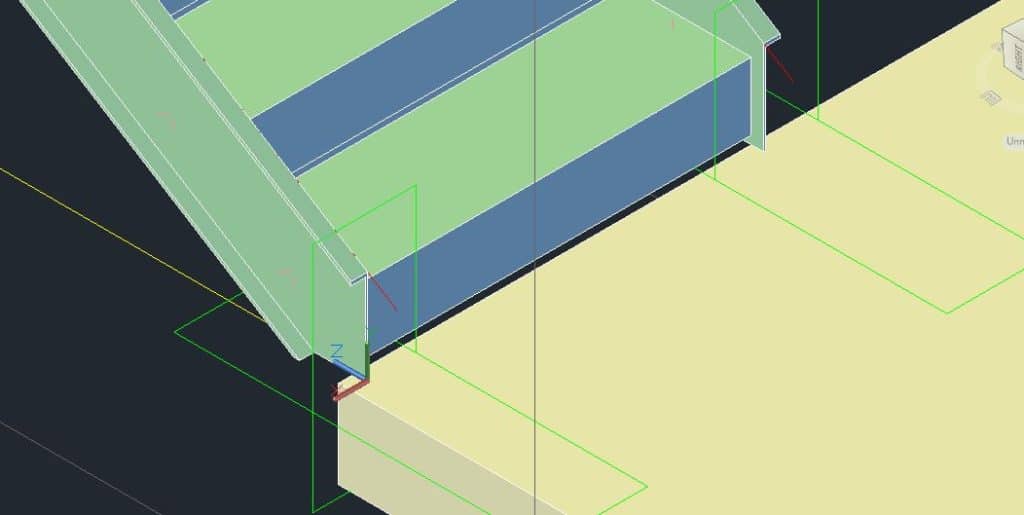
15. Applying the Plate Covers
- Rotate the UCS so it is perpendicular to the face of the channel.
- Go to Home tab -> Objects -> Rectangular Plate, 2 Points.
- Select two diagonal points where the plate needs to be applied.
- A dialog box will open – adjust thickness and positioning if necessary.
- Close the dialog box.
- Set the UCS to UCS World in the UCS tab in Advance Steel Tool Palette
- Copy the plate to the other stringer
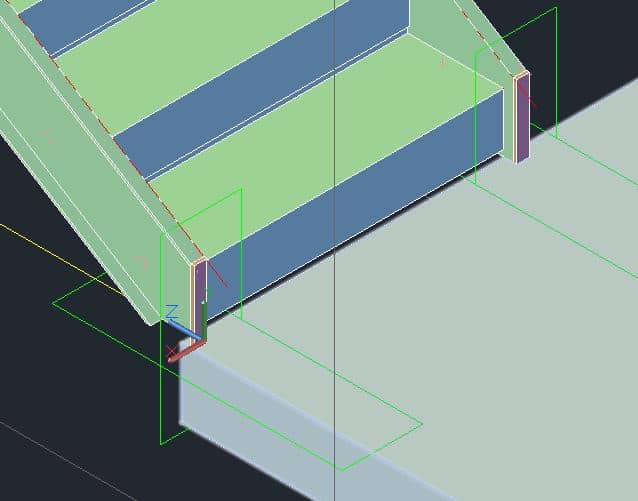
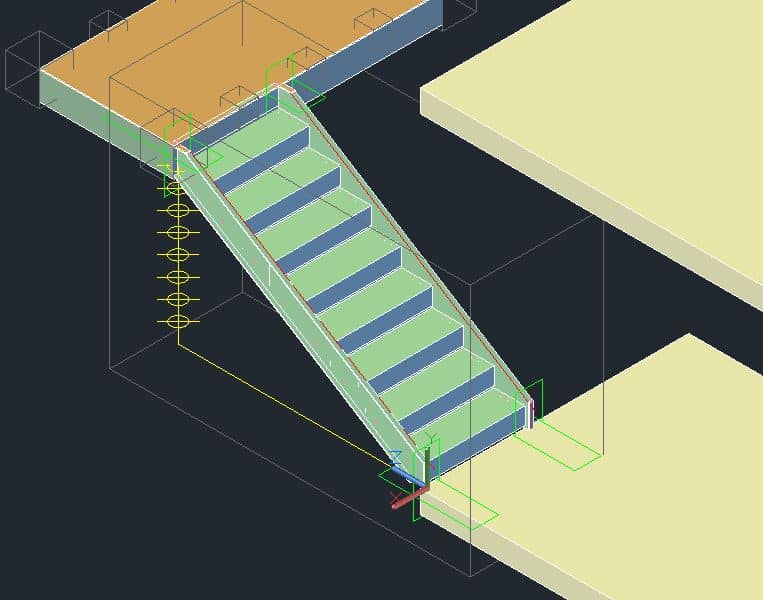
16. How To Make the Second Flight
The procedure is exactly the same, except the channels at the bottom are not sitting flat on the concrete floor. Instead, they are notched.
To make a notch at the bottom of the channels, use Advance Steel Tool Palette -> Features -> Rectangular Contour, 2 points. Place the UCS in a manner so it is parallel to the stringers first and then cut out the part that needs to be cut out.
- Place the UCS so it is paralell to the MC stringer and 1.5” away from the first raiser.
- Rotate the X,Y plane so it is oriented vertically.
- Go to Advance Steel Tool Palette -> Features -> Shorten at UCS.
- Choose both MC channels and press ENTER
- Both channels will be shortened
17. Making a Notch in the Stringers
- Rotate the X,Y plane so it is oriented vertically and parallel to the stringer
- Initiate Rectangular, Contour 2 points tool in the Features of Advance Steel Tool Palette
- Select first stringer to be modified
- Draw the rectangle of the cutout
- Do the same for the other stringer
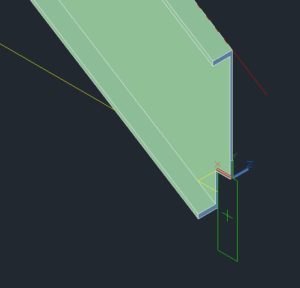
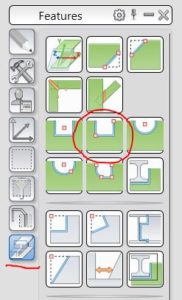
18. Completed Stairs
Completed Stair and Landing should like like this:
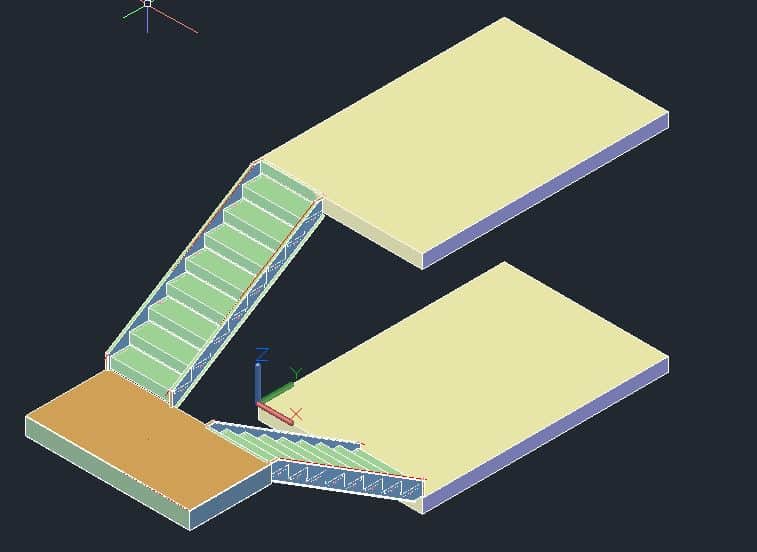
To create railings – visit my post about making railings: Hand – Railings in Advance Steel – Complete Guide
If you want to learn all about options avaliable to make modifications to your stair, read my post about making stairs: Stairs in Advance Steel Complete Guide

